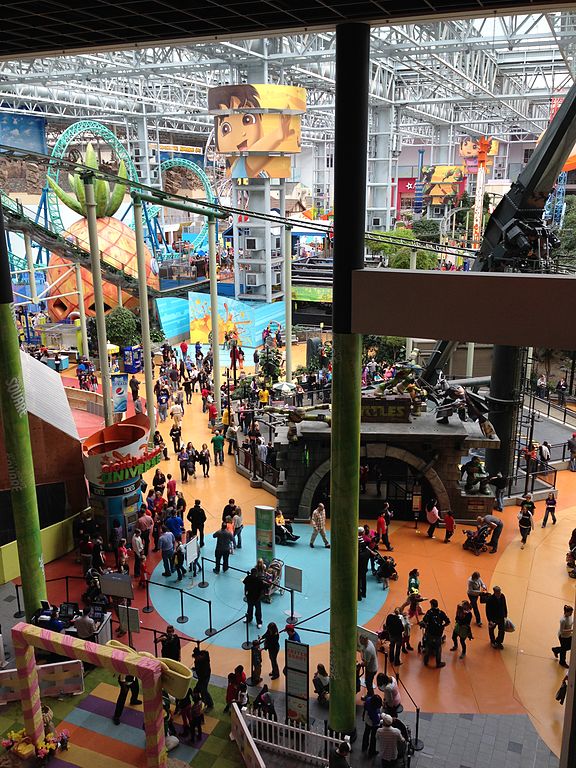How One of America’s Largest Malls Avoids Scary Utility Bills
The Mall of America is located in Bloomington, Minnesota, just a few miles outside Minneapolis/St. Paul. It is enormous. Beyond the nearly 3 million square feet of retail space, the Mall of America is host to Nickelodeon Universe, one of the largest indoor theme park in the country (pictured above); the Sea Life Minnesota Aquarium; a mini-golf course; a wedding chapel; and other attractions typically reserved for vacation destinations. It’s the second-largest mall in the United States.
But if you’re a local, you don’t just go there to shop or to ride the roller coasters. For residents of the Bloomington area, the mall is also a respite from often-harsh weather—from December through February, for example, the average high temperature is below freezing, and residents are regularly greeted with snow. Yet despite its size and location, the mall’s heating bills are as low as you can go: zero. In fact, during the winter, they often have to turn the air conditioning on.
Why? Because when you go to the Mall of America, you bring your heat with you. And so does everybody else.
Construction for the Mall of America began in the summer of 1989 at the site of Metropolitan Stadium, a then-retired baseball and football stadium, which was the home of the Minnesota Twins and Vikings. When constructing the complex, the owners and developers decided that heating the common spaces, especially in the cold winters (nearby St. Paul averages about 40 inches of snow each year) required special attention. Instead of installing a massive central heating system, the mall’s owners decided to go green, and, hopefully, save a lot of money in the process.
The solution: don’t let any of the heat escape. As the mall’s website notes, the mall generates some warmth via “passive solar energy from 1.2 miles of skylights” that each bring in a little bit of sunshine to the corridors that connect shops to one another. Then there’s the excess heat from all the things being used throughout the mall—escalators, lights, and the roller coaster (yes, the mall has a roller coaster)—which helps keep the mall toasty even during the winter.
But the real heat source are the people inside. Each of us typically has an internal temperature of 98.6 degrees Fahrenheit (37 degrees Celsius), and we give off heat throughout the day — even when its cold outside. The mall averages about 40 million visitors a year, according to the Bloomington website, and they bring a lot of heat with them. If you add up all those shoppers, tourists, and employees, you end up with tens of thousands of little space heaters walking around the mall daily. Their body heat means that you’ll never find a day where the internal temperature of the mall falls below 70 degrees Fahrenheit (21 degrees Celsius).
In fact, the opposite is typically true. At times, all this free heat makes the mall overly warm. It’s not uncommon for the air conditioning to be on even during the winter, as particularly busy days mean lots and lots of people — and that can lead to uncomfortably warm conditions inside, even when there are two feet of snow on the ground.
Bonus fact: You’ll not find a lot of air conditioning in Amish communities, whose people are famous for eschewing what most of us would consider modern conveniences. However, among some Ohio-based Amish, solar panels are so common that, as of 2007, you’d find more in use, per capita, than among any other community in the state. That’s because contrary to popular belief, the Amish aren’t against using electricity. Rather, according to Wired, they “rejected the enticements of the public power grid, deciding they did not want to be too directly linked to, or dependent on, the outside world.” Solar panels, to a large degree, come without those dependencies.
From the Archives: When Minneapolis and St. Paul Battled over Population: Today, they’re known as the Twin Cities. But they didn’t always get along.

